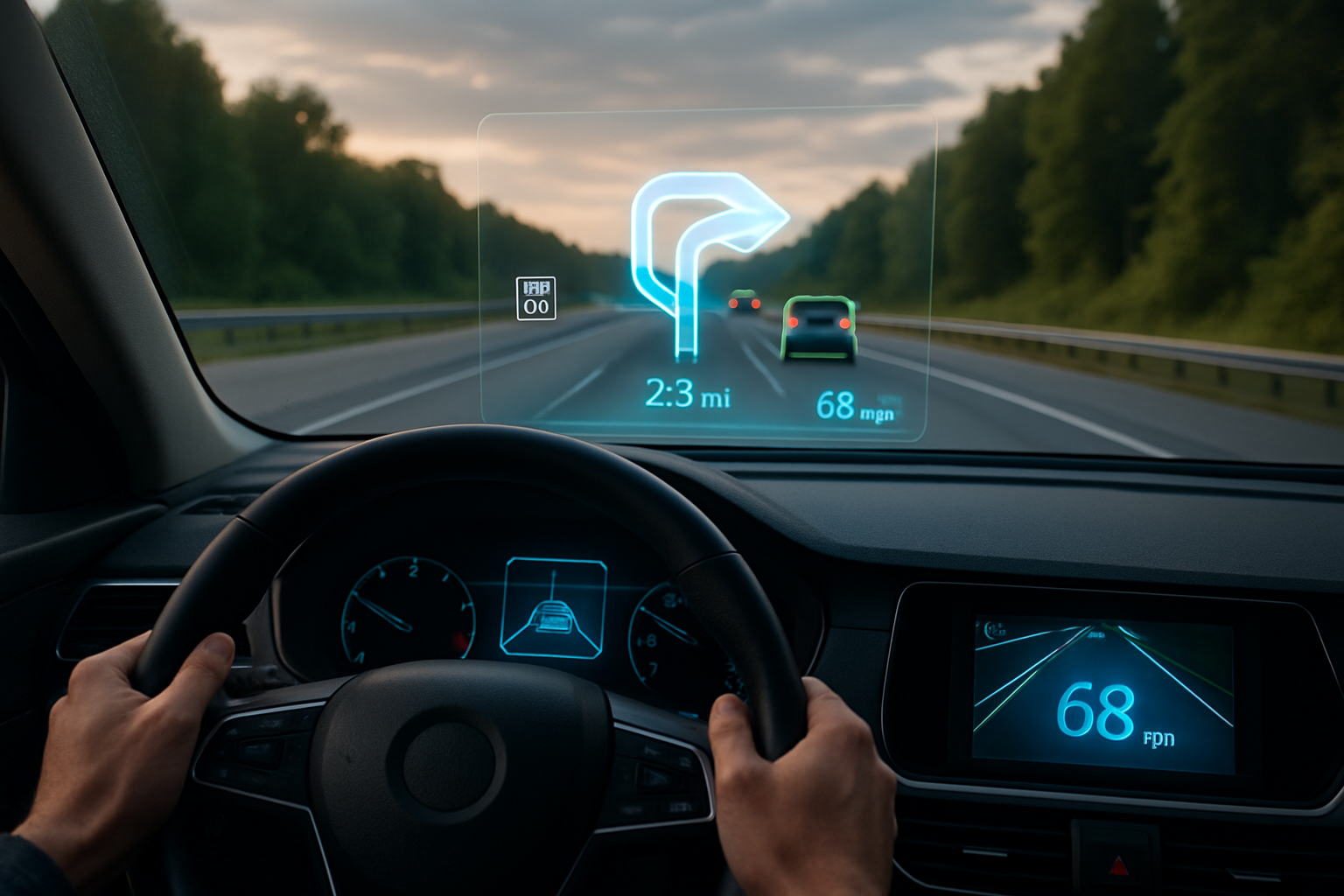Holographic Heads-Up Displays: The Future of Driver Information
Imagine cruising down the highway, your eyes fixed on the road ahead. Suddenly, a translucent image appears to float in front of you, displaying your speed, navigation directions, and even potential hazards. This isn't science fiction – it's the cutting-edge world of holographic heads-up displays (HUDs), poised to revolutionize how drivers interact with their vehicles and the road.

The Evolution of In-Car Information Display
The journey to holographic HUDs began with simple dashboard gauges. Early automobiles featured basic speedometers and fuel indicators, providing drivers with essential information. As technology advanced, digital displays emerged, offering more precise readouts and additional data points.
The first true heads-up displays in cars appeared in the 1980s, borrowed from aviation technology. These early HUDs projected basic information onto the windshield, allowing drivers to view speed and other crucial data without taking their eyes off the road. However, these systems were limited in scope and often suffered from poor visibility in bright conditions.
Holographic Technology: A Game-Changer
Holographic HUDs represent a significant leap forward. Unlike traditional HUDs that project onto a flat surface, holographic systems create three-dimensional images that appear to float in space. This technology utilizes advanced optics and computational power to generate clear, vibrant displays that remain visible under various lighting conditions.
The core of holographic HUD technology lies in its ability to manipulate light. By using precisely controlled lasers and advanced optical elements, these systems can create the illusion of depth and dimensionality. This allows for more complex and intuitive information displays, enhancing the driver’s ability to quickly process and act upon the data presented.
Enhanced Safety Through Augmented Reality
One of the most promising aspects of holographic HUDs is their potential to incorporate augmented reality (AR) features. By overlaying digital information onto the real world, these systems can provide drivers with unprecedented situational awareness.
Imagine driving in low-visibility conditions and seeing the road’s edges clearly highlighted by holographic lines. Or approaching an intersection and having potential hazards, such as crossing pedestrians or oncoming vehicles, outlined and brought to your attention. These AR capabilities have the potential to significantly reduce accidents and make driving safer for everyone on the road.
Intuitive Interface and Reduced Distraction
Holographic HUDs offer a more intuitive and less distracting way to access information while driving. Traditional dashboard displays and infotainment systems often require drivers to look away from the road, even if only for a moment. With holographic displays, essential information is presented directly in the driver’s field of view, minimizing the need to shift focus.
Moreover, the three-dimensional nature of holographic displays allows for more natural interaction. Gesture controls and eye-tracking technology can be integrated, enabling drivers to navigate menus and access information with minimal physical input. This reduces cognitive load and allows for a more seamless driving experience.
Technical Challenges and Future Developments
While holographic HUDs offer exciting possibilities, they also present significant technical challenges. Creating clear, vibrant holograms that remain visible in all lighting conditions requires sophisticated optics and powerful computing. Engineers must also consider factors such as power consumption, heat management, and integration with existing vehicle systems.
Looking to the future, we can expect continued advancements in holographic HUD technology. Higher resolution displays, wider fields of view, and more advanced AR capabilities are all on the horizon. As vehicles become increasingly connected and autonomous, holographic HUDs will likely play a crucial role in how we interact with our cars and the world around us while on the road.
The Road Ahead for Holographic HUDs
As holographic HUD technology matures, we can anticipate its adoption across a wider range of vehicles. Currently found primarily in luxury and high-end sports cars, these systems will likely become more affordable and accessible in the coming years. This democratization of technology could lead to significant improvements in overall road safety and driver experience.
The potential applications extend beyond personal vehicles as well. Commercial trucks, public transportation, and even motorcycles could benefit from holographic display technology. In each case, the ability to provide clear, contextual information without distracting from the primary task of operating the vehicle safely could prove invaluable.
As we look to a future where cars are increasingly connected and intelligent, holographic HUDs stand out as a key technology in bridging the gap between human and machine. By presenting information in a natural, intuitive manner, these systems have the potential to make our roads safer, our journeys more enjoyable, and our interactions with our vehicles more seamless than ever before.
The road ahead for holographic HUDs is bright and full of possibility. As this technology continues to evolve, it promises to transform not just how we see information in our cars, but how we interact with the entire driving experience. The future of automotive displays is here, and it’s floating right before our eyes.





